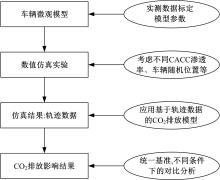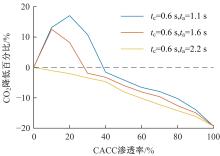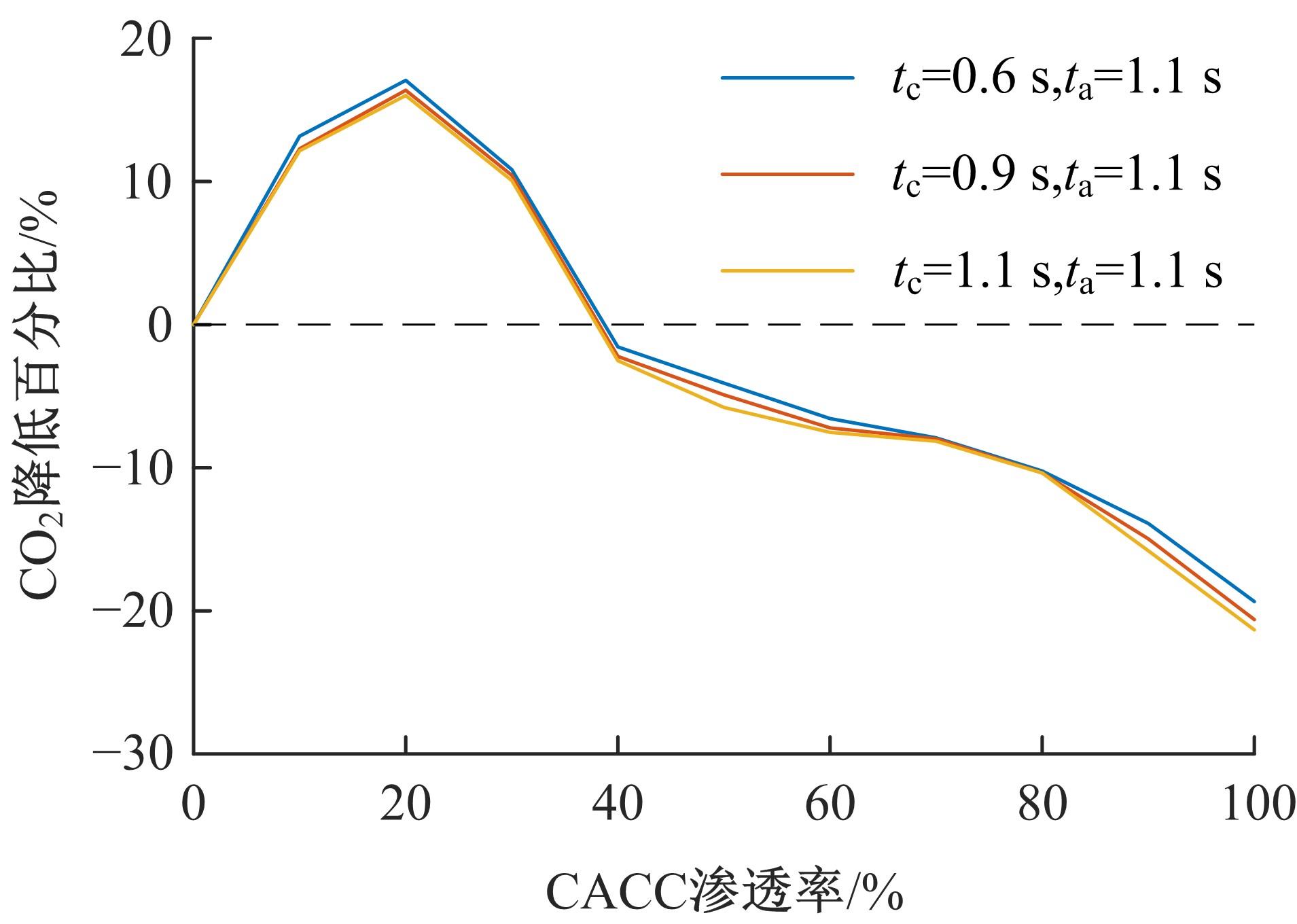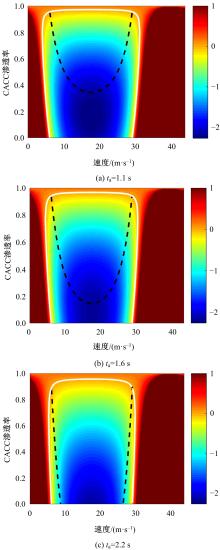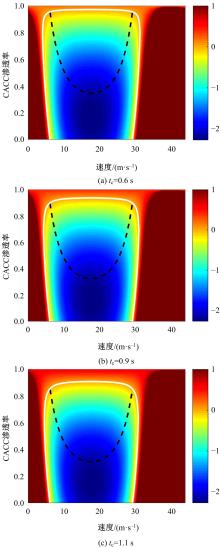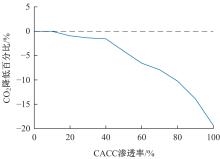Journal of Jilin University(Engineering and Technology Edition) ›› 2023, Vol. 53 ›› Issue (1): 150-158.doi: 10.13229/j.cnki.jdxbgxb20210601
Impacts of CO2 emissions and improving method for connected and automated mixed traffic flow
Yan-yan QIN1( ),Xiao-qing YANG2,Hao WANG3(
),Xiao-qing YANG2,Hao WANG3( )
)
- 1.School of Traffic and Transportation,Chongqing Jiaotong University,Chongqing 400074,China
2.Kunming Urban Planning & Design Institute Co. ,Ltd. ,Kunming 650041,China
3.School of Transportation,Southeast University,Nanjing 210096,China
CLC Number:
- U491
| 1 | 张健, 吴坤润, 杨敏, 等. 智能网联环境下交叉口双环自适应控制模型[J]. 吉林大学学报:工学版, 2021, 51(2): 541-548. |
| Zhang Jian, Wu Kun-run, Yang Min, et al. Double-ring adaptive control model of intersection during intelligent and connected environment[J]. Journal of Jilin University (Engineering and Technology Edition), 2021, 51(2): 541-548. | |
| 2 | Qin Y, Wang H, Ni D. Lighthill-whitham-richards model for traffic flow mixed with cooperative adaptive cruise control vehicles[J]. Transportation Science, 2021, 55(4): 883-907. |
| 3 | Li Y, Li Z, Wang H, et al. Evaluating the safety impact of adaptive cruise control in traffic oscillations on freeways[J]. Accident Analysis & Prevention, 2017, 104: 137-145. |
| 4 | Wang M. Infrastructure assisted adaptive driving to stabilise heterogeneous vehicle strings[J]. Transportation Research Part C: Emerging Technologies, 2018, 91: 276-295. |
| 5 | 秦严严, 张健, 陈凌志, 等. 手动-自动驾驶混合交通流元胞传输模型[J]. 交通运输工程学报, 2020, 20(2): 229-238. |
| Qin Yan-yan, Zhang Jian, Chen Ling-zhi, et al. Cell transportation model of mixed traffic flow of manual-automated driving[J]. Journal of Traffic and Transportation Engineering, 2020, 20(2): 229-238. | |
| 6 | Rahman M S, Abdel-Aty M, Wang L, et al. Understanding the highway safety benefits of different approaches of connected vehicles in reduced visibility conditions[J]. Transportation Research Record, 2018, 2672(19): 91-101. |
| 7 | Milanés V, Shladover S E. Modeling cooperative and autonomous adaptive cruise control dynamic responses using experimental data[J]. Transportation Research Part C: Emerging Technologies, 2014, 48: 285-300. |
| 8 | Gong S, Zhou A, Peeta S. Cooperative adaptive cruise control for a platoon of connected and autonomous vehicles considering dynamic information flow topology[J]. Transportation Research Record, 2019, 2673(10): 185-198. |
| 9 | Zhou Y, Wang M, Ahn S. Distributed model predictive control approach for cooperative car-following with guaranteed local and string stability[J]. Transportation Research Part B: Methodological, 2019, 128: 69-86. |
| 10 | van Nunen E, Reinders J, Semsar-Kazerooni E, et al. String stable model predictive cooperative adaptive cruise control for heterogeneous platoons[J]. IEEE Transactions on Intelligent Vehicles, 2019, 4(2): 186-196. |
| 11 | 秦严严, 王昊, 王炜, 等. 混有CACC车辆和ACC车辆的异质交通流基本图模型[J]. 中国公路学报, 2017, 30(10): 127-136. |
| Qin Yan-yan, Wang Hao, Wang Wei, et al. Fundamental diagram model of heterogeneous traffic flow mixed with cooperative adaptive cruise control vehicles and adaptive cruise control vehicles[J]. China Journal of Highway and Transport, 2017, 30(10): 127⁃136. | |
| 12 | 常鑫, 李海舰, 荣建, 等. 混有智能网联车队的交通流基本图模型分析[J]. 东南大学学报:自然科学版, 2020, 50(4): 782-788. |
| Chang Xin, Li Hai-jian, Rong Jian, et al. Analysis on fundamental diagram model for mixed traffic flow with connected vehicle platoons[J]. Journal of Southeast University (Natural Science Edition), 2020, 50(4): 782-788. | |
| 13 | 贾彦峰, 曲大义, 林璐, 等. 基于运行轨迹的网联混合车流速度协调控制[J].吉林大学学报:工学版, 2021, 51(6):2051-2060. |
| Jia Yan-feng, Qu Da-yi, Lin Lu, et al. Coordinated speed control of connected mixed traffic flow based on trajectory[J]. Journal of Jilin University (Engineering and Technology Edition), 2021, 51(6):2051-2060. | |
| 14 | Jiang R, Wu Q, Zhu Z. Full velocity difference model for a car-following theory[J]. Physical Review E, 2001, 64:No. 017101. |
| 15 | 王雪松, 孙平, 张晓春, 等. 基于自然驾驶数据的高速公路跟驰模型参数标定[J]. 中国公路学报, 2020, 33(5): 132-142. |
| Wang Xue-song, Sun Ping, Zhang Xiao-chun, et al. Calibrating car-following models on freeway based on naturalistic driving data [J]. China Journal of Highway and Transport, 2020, 33(5): 132-142. | |
| 16 | Yu S, Shi Z. The effects of vehicular gap changes with memory on traffic flow in cooperative adaptive cruise control strategy[J]. Physica A: Statistical Mechanics and its Applications, 2015, 428: 206-223. |
| 17 | Zeng W, Miwa T, Morikawa T. Prediction of vehicle CO2 emission and its application to eco-routing navigation[J]. Transportation Research Part C: Emerging Technologies, 2016, 68: 194-214. |
| 18 | Ward J A. Heterogeneity, lane-changing and instability in traffic: a mathematical approach[D]. Bristol: University of Bristol, 2009. |
| [1] | Dian-hai WANG,You-wei HU,Zheng-yi CAI,Jia-qi ZENG,Wen-bin YAO. Dynamic road resistance model of intermittent flow on urban roads based on BPR function [J]. Journal of Jilin University(Engineering and Technology Edition), 2023, 53(7): 1951-1961. |
| [2] | Yan-bo LI,Bai-song LIU,Bo-bin YAO,Jun-shuo CHEN,Kai-fa QU,Qi-sheng WU,Jie-ning CAO. Location of electrical changing station of expressway considering stochastic characteristics of road network [J]. Journal of Jilin University(Engineering and Technology Edition), 2023, 53(5): 1364-1371. |
| [3] | Ying HU,Chun-fu SHAO,Shu-ling WANG,Xi JIANG,Hai-rui SUN. Identification of road riding quality based on shared bike trajectory data [J]. Journal of Jilin University(Engineering and Technology Edition), 2023, 53(4): 1040-1046. |
| [4] | Rui-fa LUO,Hui-jun HAO,Tao-rang XU,Qiu-fan GU. Fundamental diagram model of mixed traffic flow of connected and automated vehicles considering vehicles degradations and platooning intensity [J]. Journal of Jilin University(Engineering and Technology Edition), 2023, 53(2): 405-412. |
| [5] | Zhan-zhong WANG,Ting JIANG,Jing-hai ZHANG. Evaluation of road transportation efficiency based on fuzzy double frontiers network model [J]. Journal of Jilin University(Engineering and Technology Edition), 2023, 53(2): 385-395. |
| [6] | Guang-ming NIE,Bo XIE,Yan-tao TIAN. Design of cooperative adaptive cruise control algorithm based on Frenet framework [J]. Journal of Jilin University(Engineering and Technology Edition), 2022, 52(7): 1687-1695. |
| [7] | Da-yi QU,Zi-xu ZHAO,Yan-feng JIA,Tao WANG,Qiong-hui LIU. Car⁃following dynamics characteristics and model based on Lennard⁃Jones potential [J]. Journal of Jilin University(Engineering and Technology Edition), 2022, 52(11): 2549-2557. |
| [8] | Yun-juan YAN,Wei-xiong ZHA,Jun-gang SHI,Jian LI. Mixed network equilibrium model with stochastic charging demand [J]. Journal of Jilin University(Engineering and Technology Edition), 2022, 52(1): 136-143. |
| [9] | Yan-feng JIA,Da-yi QU,Lu LIN,Rong-han YAO,Xiao-long MA. Coordinated speed control of connected mixed traffic flow based on trajectory [J]. Journal of Jilin University(Engineering and Technology Edition), 2021, 51(6): 2051-2060. |
| [10] | Hao LI,Hao CHEN. Mixed traffic network equilibrium with battery electric vehicles considering charging queuing time [J]. Journal of Jilin University(Engineering and Technology Edition), 2021, 51(5): 1684-1691. |
| [11] | Zuo-an HU,Yi-ming XIA,Jia CAI,Feng XUE. Optimization of urban rail transit operation adjustment based on multiple strategies under delay [J]. Journal of Jilin University(Engineering and Technology Edition), 2021, 51(5): 1664-1672. |
| [12] | Cai-hua ZHU,Xiao-li SUN,Yan LI. Forecast of urban public bicycle traffic demand by station classification [J]. Journal of Jilin University(Engineering and Technology Edition), 2021, 51(2): 531-540. |
| [13] | Qing-yu LUO,Wan-li TIAN,Hong-fei JIA. Location and capacity model of electric vehicle charging station considering commuting demand [J]. Journal of Jilin University(Engineering and Technology Edition), 2019, 49(5): 1471-1477. |
| [14] | CAO Qian, LI Jun, LIU Yu, QU Da-wei. Construction of driving cycle based on Markov chain for passenger car in Changchun City [J]. Journal of Jilin University(Engineering and Technology Edition), 2018, 48(5): 1366-1373. |
| [15] | SUN Bao-feng, GAO Kun, SHEN Xiu-xiu, LIANG Ting. Location model of gas station for network expansion based on capacity balance and variable coverage radius [J]. 吉林大学学报(工学版), 2018, 48(3): 704-711. |
|
||
